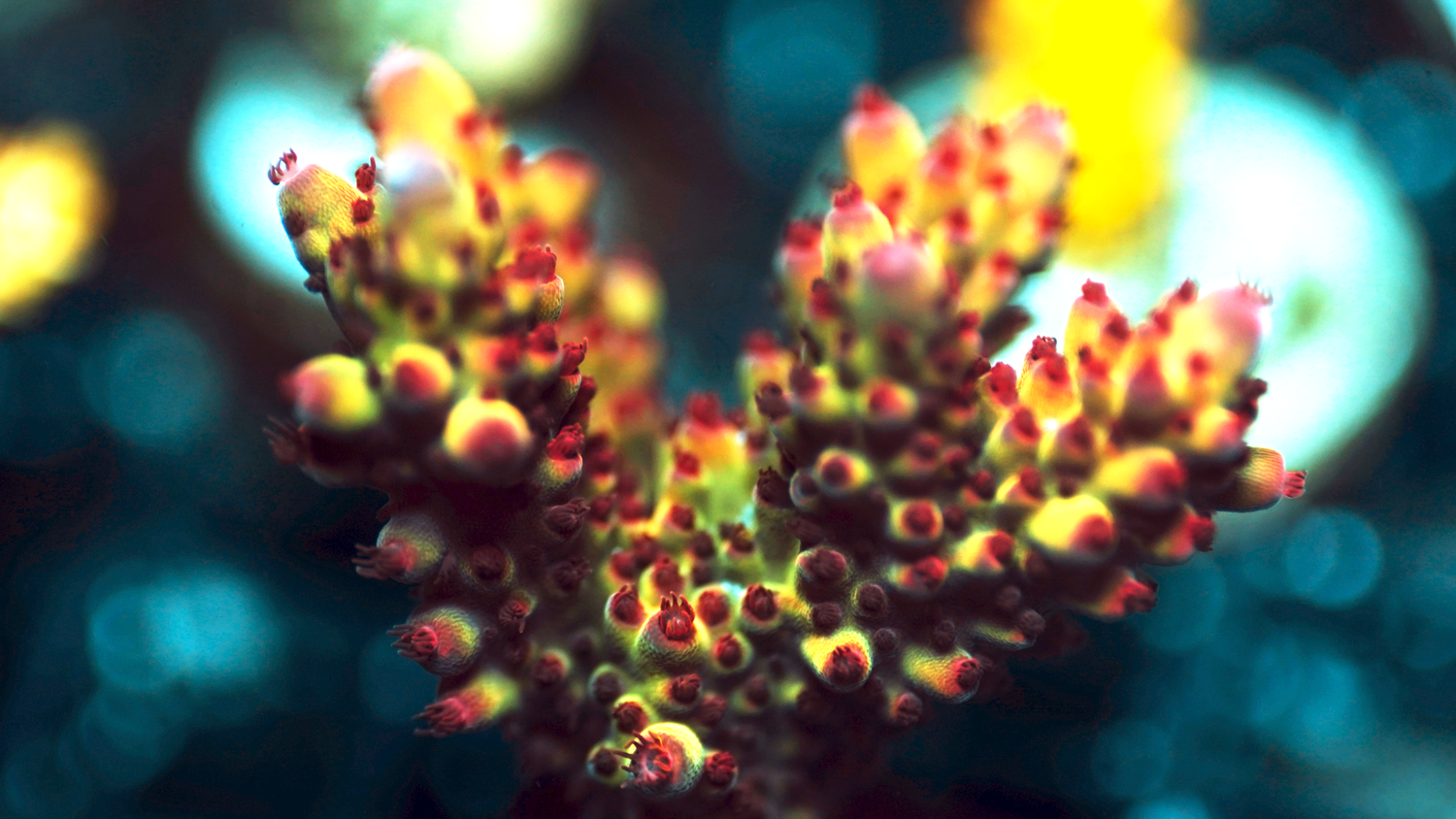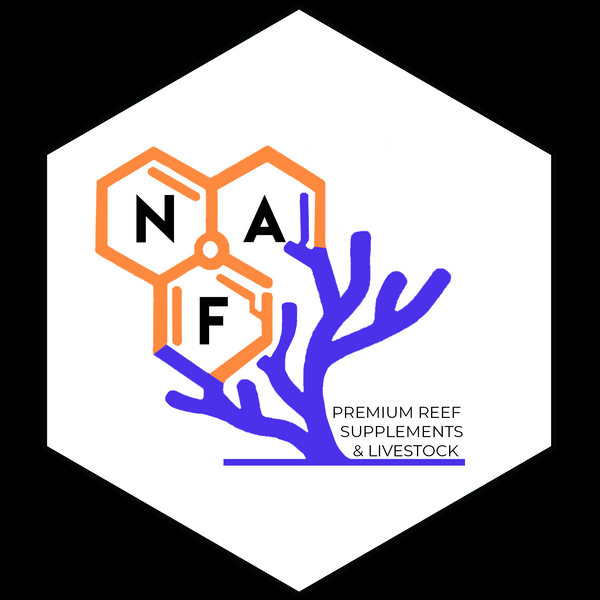Getting started with dosing
Share
Importance of dosing
As they grow, corals pull ions out of the water to build their skeletons. The two main ions consumed during this process are calcium and carbonate
(along with strontium, barium, magnesium, and other calcium-like ions). These two ions form calcium carbonate (
).
The most important measurements here are and alkalinity. In simple terms, “Alkalinity in a marine aquarium is simply a measure of the amount of acid (
) required to reduce the pH to about 4.5, where all bicarbonate is converted into carbonic acid (
) as follows:
” [1].
This is usually measured by the amount in a solution. This is measured in mg / L, meq / L, and, perhaps most commonly to hobbyists, dKH (degrees calcium hardness). We will talk almost exclusively in terms of dKH, but, for convenience, you may convert between them as follows:
, and
.
When just starting out, it may be sufficient to replace a portion of the water with a high alkalinity salt. But, as your coral growth accelerates and the amount of corals in your system increases, this may stop being sufficient.
For a rather extreme case, our farm system extracts an incredible 3 dKH per day! Most systems will consume substantially less than this, but, at least in our case, it would be entirely impractical to replenish our alkalinity based on water changes alone.
In general, it is believed that keeping alkalinity stable leads to improved coral growth. While it has been demonstrated that this is not the whole story, it is definitely a great path to success for a new reefer to follow.
Methods of replenishing alkalinity and calcium
There are a multitude of ways to replenish these ions. In general, you have two large classes of additives: 1 part and 2 part.
2-Part additives
2-Part additives work by adding in calcium and alkalinity separately. For the first part, most use calcium chloride. For the second part, many people use either sodium carbonate (“soda ash” or “washing soda”) or sodium bicarbonate (“baking soda”) (though another great option is sodium hydroxide (“lye”).
Regardless of the choice, you end up with and
at the end of the day. These additives are very potent, so a little bit goes a long way, but they can be expensive, and lead to a slowly rising salinity value.
1-Part additives
This class of additives works by adding both calcium and carbonate ions in one. The two main examples are calcium hydroxide (“kalkwasser”), and calcium formate. We will focus primarily on kalkwasser, but, very briefly, calcium formate is an interesting method of replenishing both by using a bacterial process.
Our additive of choice is kalkwasser, because it is extremely easy to obtain, inexpensive, provides a boost in pH, and does not impact salinity.
Setting up Kalkwasser
In the past, many reefers set up kalkwasser by putting a couple teaspoons in their ATO and leaving it alone. This is a very imprecise way of dosing kalkwasser, as your system’s evaporation is not constant. In addition, the pumps we use for ATO’s are not meant for the highly basic pH that kalkwasser has. This leads to a shortened lifespan for the pump, and an increased chance that the ATO fails. Because of this, we do not recommend this method.
In our opinion, the best way to add kalkwasser is via peristaltic dosing pump. You do not need a super expensive one that does sub-milliliter dosing, just one that can spread the dose out throughout the day and can dose several milliliters accurately.
1. Measure your consumption
The first important measurement is the amount of alkalinity you consume in a day. This is a very easy measurement to obtain: measure alkalinity once at a particular time of day, then measure alkalinity at the same time the next day. This amount is your daily consumption.
2. Calculate the dose
Contrary to popular belief, you can calculate the amount of kalkwasser you need to maintain your alkalinity. This calculation does assume that your kalkwasser is fully saturated (2 tsp / gallon), and it should be noted that your kalkwasser is almost certainly not fully saturated (so do expect to tweak this dose as you get things started)… But this is a great starting point. Let be the 24 hour change in alkalinity (in dKH) and let
be your aquarium’s water volume (without sand and rock – this amount is usually ~20% less than the combined volume of your sump and display). Then your daily dose (in Liters) of fully saturated kalkwasser is provided by the following.
As an example, suppose we have a system with 50 gallons and we consume 0.5 dKH in a day. Then the dose is:
3. Know your Limits
As you may have noticed, the dose for the above is quite substantial at 830 mL per day! This is the unfortunate downside to using kalkwasser. You can only dose up to your daily evaporation. In our case, this is not possible, as we would be dosing nearly 2 gallons per day! So, to compensate, we dose both kalkwasser and 2-part on the farm.
Other than that, your are good to go!
About us
Thank you very much for reading! If you have any questions, feel free to reach out to us directly or comment below. If you found this post useful, we hope you will consider sharing it with others. We also invite you to sign up for our mailing list, where you will be notified when we add new blog posts and add new corals to the store.
We also hope you will consider us for your future coral purchases!

